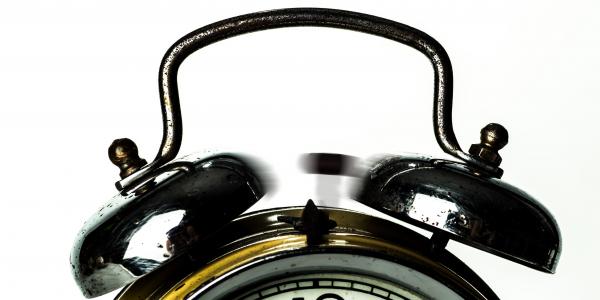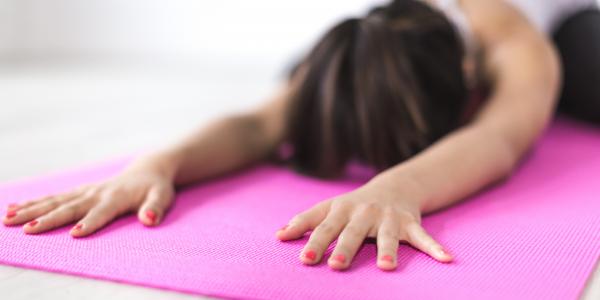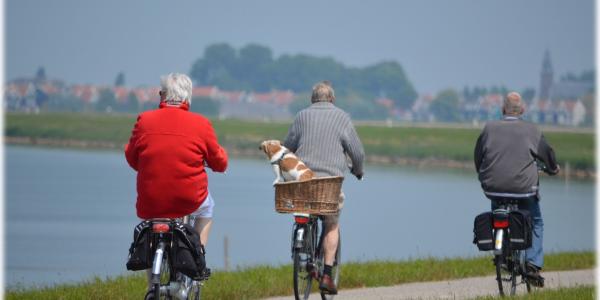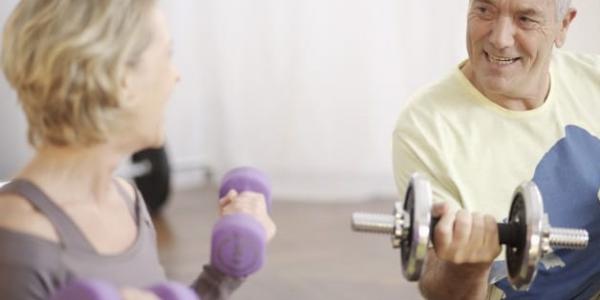Physical Literacy: The Foundation for a Life of Movement
.jpg)
Early development of physical literacy is linked to future success in sport and activity participation. In the long run, establishing active habits in children sets them on the path to happier and healthier lives.
Here’s a scenario: It’s summer and you’re strolling through the farmers market, enjoying some sunshine and taking in the bright floral aromas. You pass by the booth for your favorite local apple orchard, and the farmer recognizes you. She calls out from behind a folding table, “this one’s on the house!” and tosses an apple your way. You reach out with both hands and snag the airborne fruit as it enters your orbit- no bruised produce today. It all happened in a split second. You didn’t think about catching the apple, didn’t calculate its trajectory or consider wind resistance- you just instinctually caught. That’s because things like catching and throwing are fundamental physical skills that you learned a long time ago, internalized, and still use today. The muscle memory and motor patterns required to make the catch have been hardwired into your system. If you changed the context- let’s say you’re home sitting on the couch and your kid tosses you the remote control- you’re still probably going to catch it. Those foundational skills allow you to make the grab, even when the setting and flying object changed.
As kids, we learn basic movement skills that help us navigate the world. Although they don’t realize it then, the running, jumping, throwing and catching that children do at play is laying the groundwork for a lifetime of physical development. British researcher Dr. Margaret Whitehead recognized this, and in 1993 proposed the concept of Physical Literacy (PL).
We commonly think of literacy as the ability to read and write, which it is. But the term ‘literacy’ also describes “competence or knowledge in a specified area.” To this end, the concept of physical literacy is fairly simple, as outlined by the International Physical Literacy Association in 2014:
“Physical literacy is the motivation, confidence, physical competence, knowledge, and understanding to value and take responsibility for engagement in physical activities for life.”
For kids, that means the development of movement skills like running and jumping, throwing and catching. It also involves the integration of athletic movements like agility, coordination, speed, and balance. Building these fundamental skills gives children the confidence to participate in sports and games as they get older. Early development of physical literacy is linked to future success in sport and activity participation. In the long run, establishing active habits in children sets them on the path to happier and healthier lives.
Sport Canada has identified 13 fundamental skills that kids master to become physically literate. They have categorized the 13 skills into 3 groups: locomotor/body, sending, and receiving. The Locomotor and Body skills include walking, running, balance, skating or skiing, jumping, swimming, cycling and skipping. The Sending skills are throwing, kicking, and striking. Catching and trapping are the two Receiving skills. Additionally, Sport Canada classifies the four environments in which physical literacy is learned. The four environments are: On the ground (basis for most sports & activities), in the water (aquatic activities), on snow and ice (winter sliding/skiing activities), and in the air (gymnastics, aerial sports).With a baseline competency in the 13 skills, kids should have a solid foundation for success in games, sports, and activities as they get older.
The concept of physical literacy honors individuals with differing capabilities, and upholds the central tenant that everyone deserves opportunities to develop their own PL. Because people with varying abilities may need different resources, it’s important for teachers, coaches, healthcare providers, and parents to have the tools available to accommodate the needs of all participants. The goal is to increase physical activity opportunities and in turn, positive experiences.
According to Dr. Whitehead’s 2010 book, Physical Literacy throughout the Lifecourse, there are nine cornerstone aspects of physical literacy:
- Everyone can be physically literate as it is appropriate to each individual’s endowment
- Everyone’s physical literacy journey is unique
- The skills that make up physical literacy can vary by location and culture
- Physical literacy is relevant and valuable at all stages and ages of life
- The concept embraces much more than physical competence
- At the heart of the concept is the motivation and commitment to be active
- The disposition is evidenced by a love of being active, born out of the pleasure and satisfaction individuals experience in participation
- A physically literate individual values and takes responsibility for maintaining purposeful physical pursuits throughout the lifecourse
- Charting of progress of an individual’s personal journey must be judged against previous achievements and not against any form of national benchmarks
Sport Australia provides even more to consider, outlining the four factors that shape each individual’s level of physical literacy:
“… is about building the skills, knowledge and behaviours to help us lead active lives. It is the holistic learning that occurs through movement and physical activity and integrates physical, psychological, social and cognitive capabilities.”
In this definition, Sport Australia is pointing out that context and culture matter. For example, someone that rides a stationary indoor exercise bike each day for 40 minutes would certainly get a boost in the physical category, but may miss out on the social, cognitive, and psychological benefits that they may also gain if they did that 40-minute ride outdoors with friends. Meanwhile, the outside rider improves in all four areas: endurance and balance (physical), safe riding behaviors (cognitive), fun with friends (social), and confidence riding in a group (psychological).
Sport Australia also offers a developmental model for physical literacy, which outlines a five-stage progress structure. Each stage builds upon the preceding one as the participant improves their competence in the skill. The end goal is the ability to apply the new skill confidently and in various settings, like the apple/remote example earlier:
Stage 0: Pre-Foundational: experiencing, playing or exploring limited forms of movement.
Stage 1: Foundation and Exploration: learning and exploring their capabilities for movement
Stage 2: Acquisition and Accumulation: Frequent practice and refining capabilities for movement.
Stage 3: Consolidation and Mastery: Ability to perform and analyze one’s own movement capability.
Stage 4: Transfer and Empowerment: Applying capability for movement to new situations.
Dr. Whitehead’s work informs us that PL is relevant and valuable at all stages of life. For adults, possessing a baseline of physically literacy is key to helping us stay active and healthy as we age. Someone who is physically literate has confidence in their ability to move and will be more likely to maintain their physical health over the long run. If you have some work to go in the area of PL, not to worry. Like all skills, physical literacy can be improved with practice, regardless of age.
Over the past few decades, it has generally been researchers outside of the US that have taken the lead in the inquiry and promotion of physical literacy. The Physical Literacy Association is based in Canada and Dr. Whitehead is British. Australia is another country with a history of supporting the teaching and research of physical literacy. While the US is warming up to the concept, (particularly in the youth/physical education setting) we are still behind many of our western colleagues. That said, researchers are starting to recommend the promotion of physical literacy stateside, specifically with older adults. The hope is to reinvigorate some of the competencies needed to keep moving with age, which opens up a diverse pool of activity options beyond walking. Research has shown the connection between an individual’s perceived health and physical function in relation to quality of life scores. Put simply, improving physical literary is a great way to enhance the skills and confidence needed to keep you moving well and feeling good.
Photo by Lukas from Pexels
Related Articles

Want a better night’s sleep? Get Moving!
The connection between exercise and sleep is very real. This article examines current research, and how your everyday activities may be influencing sleep patterns.

Bend, Not Break: The Importance of Maintaining Flexibility
You may not think about it often, but flexibility impacts our everyday lives. Learn more about the physiology of flexibility and why you should consider making stretching part our your routine.

A Brief Guide to the Body's Aerobic System
Aerobic exercise is a cornerstone of physical wellness. Learn more about the function of the aerobic system and the role it plays in supporting good health.

Strength Training: Lift Your Way to Better Health
If your workout doesn’t include strength training, you’re missing out. Strength training can ward off age-related muscle loss, keep your bones strong, promote mobility and function, and even help combat depression and cognitive decline.





